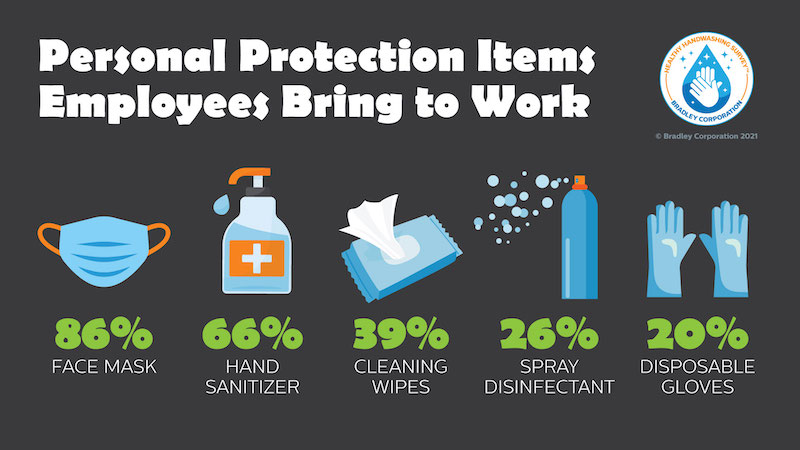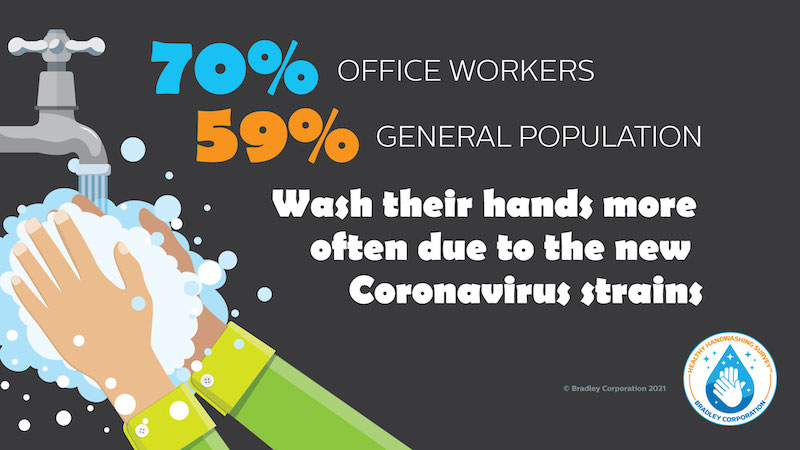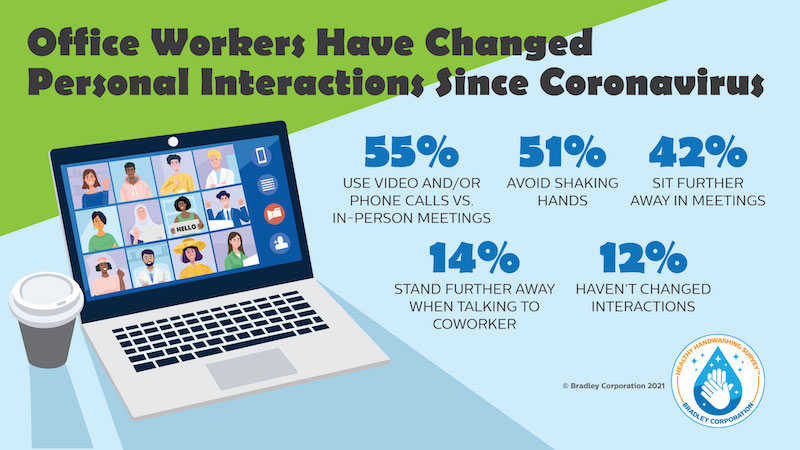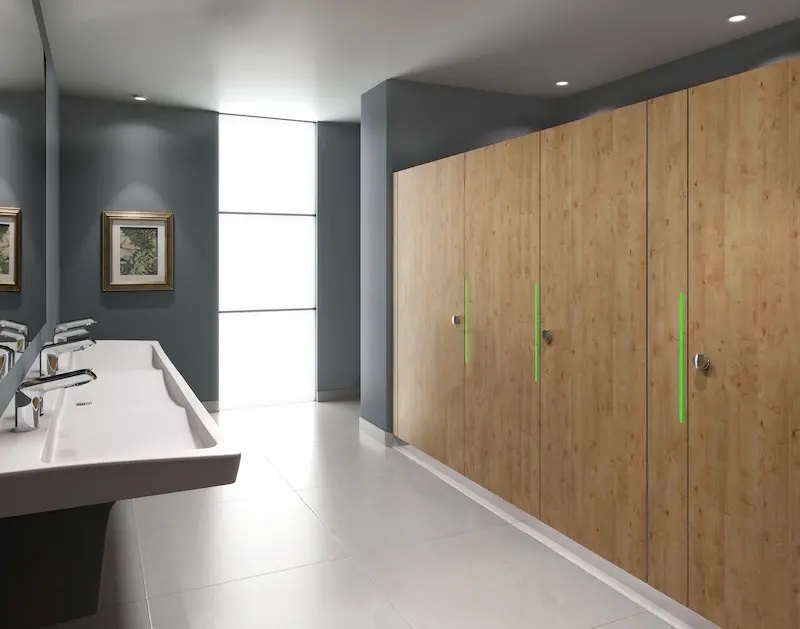As office workers in the U.S. continue returning to their places of employment, Bradley Corp. conducted its Healthy Handwashing Survey™ and found that coronavirus concerns persist, especially as new variants emerge. In response, employees are taking preventive actions. 86% are bringing a mask with them to work and 73% have been fully vaccinated. In addition to masks, office workers are packing a few other personal protection items: 66% have their own hand sanitizer; 39% are taking cleaning wipes; and 29% are prepared with disinfectant spray.
The survey also revealed that, compared to the general population, office workers are significantly more conscious about coming in contact with germs and more concerned about contracting the coronavirus. 73% of office workers worry about getting the coronavirus versus 67% of the general population. And, due to the rise in new strains of the virus, 70% of office workers have implemented a more rigorous handwashing regimen versus 59% of the general population.

The Healthy Handwashing Survey from Bradley Corp. queried 1,035 American adults Aug. 3-10, 2021, about their handwashing habits, concerns about the coronavirus and their return to the workplace. A subset of 513 respondents who work in offices were identified and asked a series of applicable questions. Participants were from around the country and were evenly split between men and women. The Healthy Handwashing Survey of the general population has a margin of error of +/- 3% and the office worker subset has a margin of error of +/- 4, with a 95% confidence level.
The ongoing pandemic has also led to changes in the work environment – namely how workers interact with their colleagues. At the office, 51% avoid shaking hands, 42% sit further way in meetings and 36% use a video call instead of meeting in person. In terms of hand hygiene, approximately two-out-of-three office workers are washing their hands more frequently since returning to the office, with half washing six or more times a day.

“Office workers are returning to the workplace cautiously—particularly now with the prevalence of the Delta variant—and are personally taking steps to avoid germs and the virus,” says Jon Dommisse, Vice President of Marketing and Corporate Communication, Bradley Corp. “The coronavirus has notched up the need for cleaner workspaces, limited contact and increased handwashing.”
Coronavirus Concerns Spur Hand Hygiene Practices
With office workers washing their hands more frequently, 62% report their employers have made changes or improvements to workplace restrooms in response to the pandemic, including more frequent cleanings. And, in a sign of today’s pandemic times, 79% of office workers believe touchless restroom fixtures are important. Case in point, when using their workplace restroom, two-thirds reach for a paper towel to avoid touching restroom door handles, the toilet flusher and faucet handles. Another one-third use their foot to operate the toilet flusher.
Within the workspace, employers have added hand sanitizing stations and encouraged employees to stay home when sick. Those actions haven’t gone unnoticed or unappreciated by employees. 53% of office workers say their employer’s response to the pandemic and implementation of safety measures makes them feel more valued and 35% say it makes them feel more positive about the company they work for.

Related Stories
Market Data | Jun 14, 2016
Transwestern: Market fundamentals and global stimulus driving economic growth
A new report from commercial real estate firm Transwestern indicates steady progress for the U.S. economy. Consistent job gains, wage growth, and consumer spending have offset declining corporate profits, and global stimulus plans appear to be effective.
Market Data | Jun 7, 2016
Global construction disputes took longer to resolve in 2015
The good news: the length and value of disputes in the U.S. fell last year, according to latest Arcadis report.
Market Data | Jun 3, 2016
JLL report: Retail renovation drives construction growth in 2016
Retail construction projects were up nearly 25% year-over-year, and the industrial and office construction sectors fared well, too. Economic uncertainty looms over everything, however.
Market Data | Jun 2, 2016
ABC: Nonresidential construction spending down in April
Lower building material prices, a sluggish U.S. economy, and hesitation among private developers all factor into the 2.1% drop.
Market Data | May 20, 2016
Report: Urban area population growth slows
Older Millennials are looking to buy homes and move away to more affordable suburbs and exurbs.
Market Data | May 17, 2016
Modest growth for AIA’s Architecture Billings Index in April
The American Institute of Architects reported the April ABI score was 50.6, down from the mark of 51.9 in the previous month. This score still reflects an increase in design services.
Market Data | Apr 29, 2016
ABC: Quarterly GDP growth slowest in two years
Bureau of Economic Analysis data indicates that the U.S. output is barely growing and that nonresidential investment is down.
Market Data | Apr 20, 2016
AIA: Architecture Billings Index ends first quarter on upswing
The multi-family residential sector fared the best. The Midwest was the only U.S. region that didn't see an increase in billings.
Building Technology | Apr 11, 2016
A nascent commercial wireless sensor market is poised to ascend in the next decade
Europe and Asia will propel that growth, according to a new report from Navigant.
Industry Research | Apr 7, 2016
CBRE provides latest insight into healthcare real estate investors’ strategies
Survey respondents are targeting smaller acquisitions, at a time when market cap rates are narrowing for different product types.

















